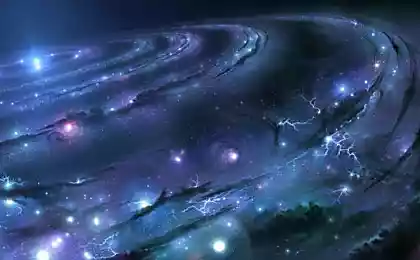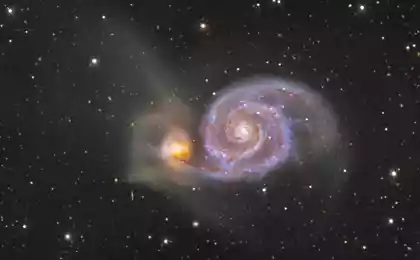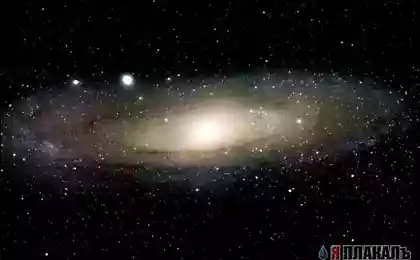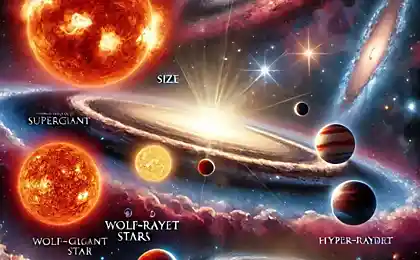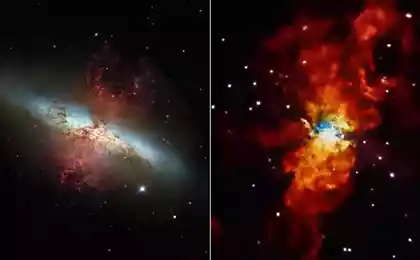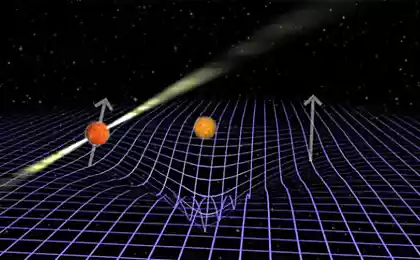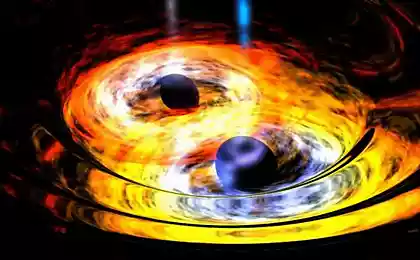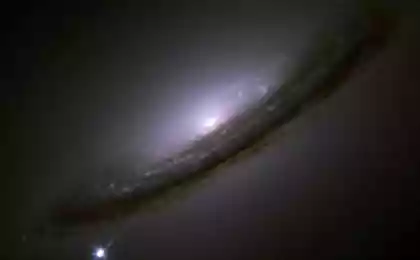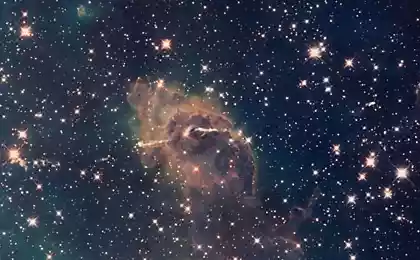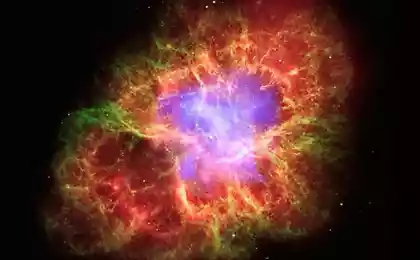1011
Motion in the Galaxy: gifs

Watching a clear night the dome of the sky easy to believe in its immutability and immobility, but even the ancients noticed that we are moving in the sky not just the Sun and the Moon. Watching night after night, for the first astronomers have discovered a planet, meaning “wandering”, and that was only the beginning. In fact, the whole universe is in motion, and only our short human life is not possible to observe all the scale and grandeur of this process. While the observation of the motion in space available to us within the Solar system, but the success of astronomy to look further.
The light echo of star flash

In January 2002 nondescript variable star in our Galaxy V838 Unicorn broke out and became 600 thousand times brighter than the Sun. For a while the star was brightest in the Galaxy, but quickly extinguished. We also witnessed the unusual phenomenon called a “light echo.” While we believe that from a star spreads bubble of glowing gas, we actually see more. This is the flash light leaves the star at the speed of light and illuminates the already pre-existing but invisible in the dark dust clouds. We can observe a “slow” procession of the light wave due to the distance 20 thousand light years.
The supernova charges the ring gas
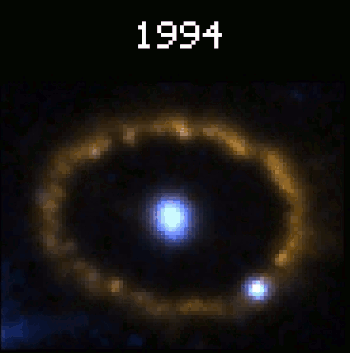
The closest, during the existence of astronomy, supernova 1987A in the Large Magellanic cloud exploded 30 years ago (or rather observations of the explosion were possible in 1987, and she rushed for 170 thousand years earlier). At closer distances, for example in our galaxy, supernova explosions were not recorded for four century, therefore 1987A is of great interest for science and it is closely monitored. The material of the exploded star applies a rate of 7 thousand km/s, and a few earthly years he reached the ring of material that surrounds the star at a distance of 0.5 light years. This ring appeared much earlier — about 20 thousand years ago when an exploding star formed by the merger of two stars. The “fall” of one star to another has given rise to the ejection of matter, which turned into a “diamond necklace” when he reached the powerful streams of matter from the explosion of 1987. Now the ring is fading and must return to the old dull existence 15-25 years.
Growing Homunculus

In 1995, 2001 and 2008, the space telescope Hubble observed the reflection nebula the Homunculus around the star ETA Carinae. The explosion that produced the nebula occurred in 1841 (excluding SV 7500 years before the stars), and since then is the subject of observations. Given the short age of the nebula will still be able to see her actual height.
Alien solar system full face

To see planets in other solar systems is a difficult task. The problem is the brightness of the star around which the planets revolve. The planets themselves practically does not radiate, but only reflect light, so they are very dim and their own sun illuminates our telescopes. The chances are increased if the planets — gas giants like Jupiter or even larger. It also helps if the planet rotates far enough from its star. And the possibility of the observation of alien planets improved with modern telescopes such as Keck, and data processing algorithms. The result: a visible rotation of the planetary system of the star HR 8799 dot Pegasus from a distance of 129 SV years. Each of the planets more Jupiter, further from the stars. The closest describes the annual round the earth in 40 years, far over four hundred. We see the result of observation in seven years.
Space robbery live
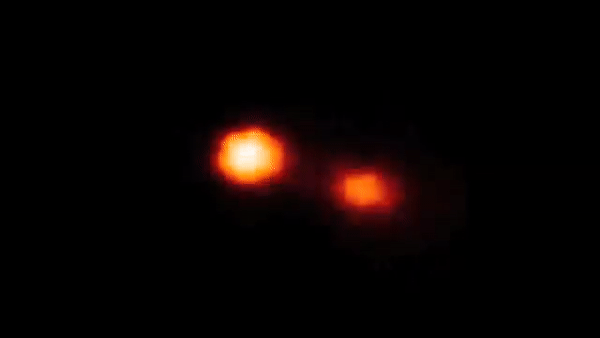
Eclipsing double star Sheliak (Beta Lyra) demonstrates interaction between the close system of two stars. And now there is a process of transformation of matter from one to another. The donor star, the mass in three Sunny, looks brighter and has an elongated shape due to tidal deformations. Star-the robber has a mass of 13 solar. The intensity of the flow of matter from one to another is about one Sun's mass every 50 thousand years. The orbital period of the system 13 of day, distance to pair 960 light-years.
Pulsar in the Sail
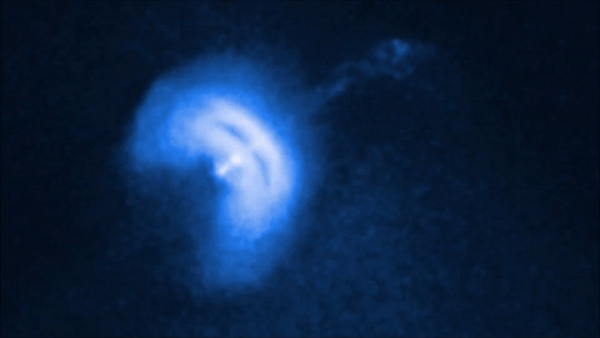
The neutron star in the constellation of the Sails (Vela Pulsar) with a distance of about 1 thousand light years from Earth. Is a Prime source of pulsations in the optical, x-ray, gamma and radio electromagnetic radiation. There were approximately 11 thousand years ago as the result of a supernova explosion of the second type.
The pulsar has a diameter of about 20 km (would fit within the ring road) and rotates at a speed of 11 revolutions per second. A series of 8 images from June to September 2008 x-ray space telescope Chandra have allowed to look inside the gas-dust nebula, and to consider the jet of the pulsar. Jet — a stream of high-energy particles spewing from the polar regions of the neutron star. The speed of flow in the stream reaches half the speed of light and stretches across half a light-year. Frequency flapping of the jet is three periods in 122, 73 and 91 days, which may be due to precession of the pulsar.
Flying neighbor
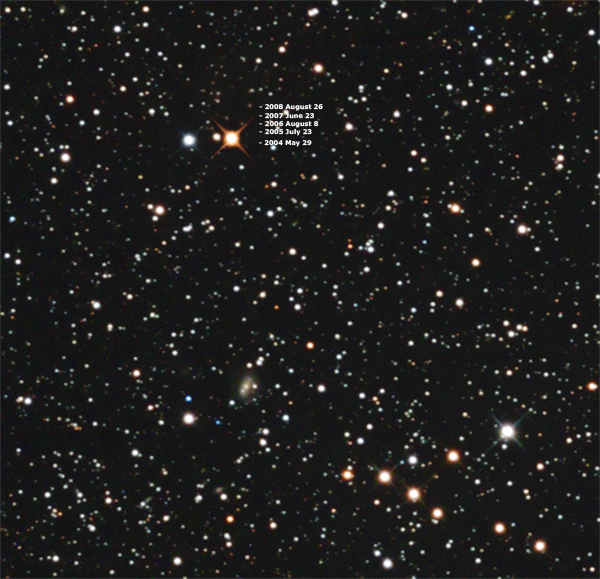
Barnard's star — one of the closest to us (within about 6 light years), but it is interesting that very quickly, according to the star standards, is moved in the earthly sky. For viewers of the Earth, this is the “fast” star after the Sun. The disc of the moon she would have crossed over 174 years, however, the astronomers, even Amateurs can detect its movement relative to other stars in a few years.
Once Barnard's Star attracted the attention of astronomers as the owner of the nearest exoplanets. To achieve them even offered a separate project starship, but long-term observations have not revealed any significant satellites of the star, so now she was in flight, and interesting only to fans.
The heartbeat of the milky Way

Only thirty years ago the existence of a supermassive black hole at the center of the milky way galaxy was obvious. Examined the hypotheses simple star clusters. To confirm the presence of a black hole in the center of the Galaxy (at least of the object meets all its manifestations) has allowed progress in optics. The development of adaptive optics and the observation of the galactic center in infrared wavelengths allowed us to see the actual motion of stars around an invisible Central object. Although he did not emit light, but it is a bright source of radio waves known as Sagittarius_A* (Sagittarius a*).
By studying the orbits of surrounding stars were able to estimate the mass and size of object: about 4 million solar masses enclosed in a diameter comparable to the orbit of Pluto. At present Sagittarius a* is one of the most convincing experimental evidence for the existence of black holes.
The above animation shows the result of the astrometric and spectrometric observations from 1992 to 2008. Blue stars are young, red — old.
The actual observations are not so evident, but in its own picturesque:
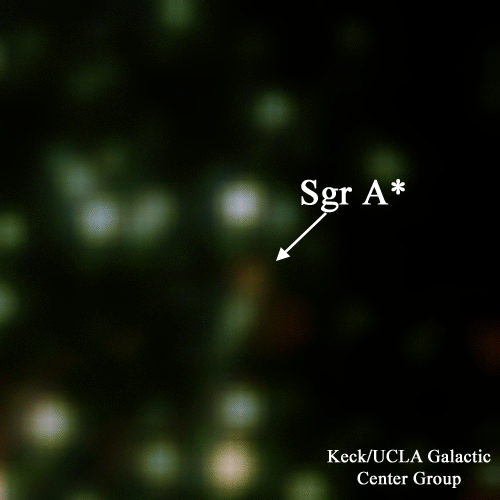
Source: geektimes.ru/post/285602/

